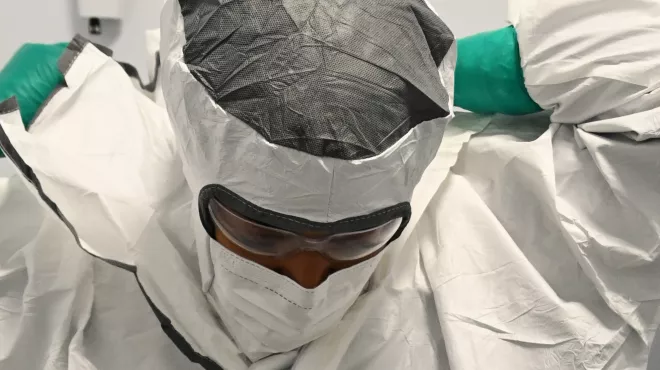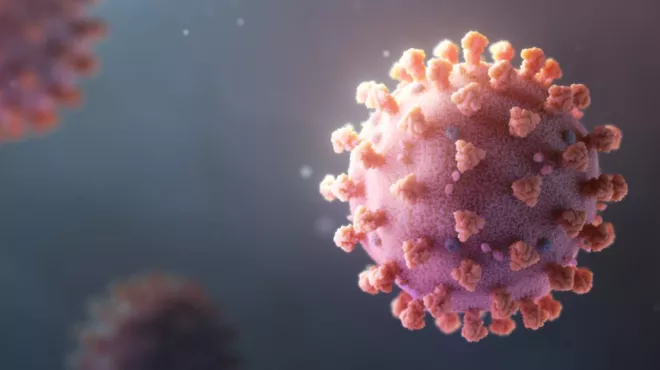But what if they didn’t need as much tissue to complete their work? Could the needle size shrink?
Enter 3-D printing, which has been making international headlines over the past couple of years, showcasing the technology’s ability to quickly and inexpensively create everything from prosthetic body parts to clothing and art. It’s also transforming research in the lab, enabling scientists to reinvent tools, including the equipment at Novartis that processes tissue from patients for use in drug discovery.
With 3-D printing, the only limitation is your imagination.
Mike Smith, Executive Director of Analytical Sciences and Imaging at Novartis Institutes for BioMedical Research
To analyze proteins in tissue scientists use a machine called a mass spectrometer or “mass spec.” Before using a mass spec, however, they need to sort and prepare batches of cells culled from tissue samples. As the samples get smaller, it becomes challenging—and inefficient—to handle the cells with conventional tools. Jeffrey Martin, a postdoctoral researcher who recently completed his fellowship at the Novartis Institutes for BioMedical Research, saw this challenge and thought it could be solved.
“A million cells is enough for classic sample preparation, but we may only get 5,000 cells from fine-needle biopsies after sorting them,” Martin explained. “It’s very difficult to handle this limited amount of material with conventional sized tools such as test tubes.”
“He compared it to trying to scrape the last speck of jelly out of a large glass jar. When working with a limited amount of material, that small speck of jelly may be all you have. Martin and his colleagues came up with an improved micro-scale system to handle the “speck,” using a 3-D printer to create some of the parts for a prototype that makes tiny samples easier to manipulate. It connects cell sorters with mass specs. They recently published the system in the journal Analytical Chemistry.
Designing what they need
“Scientists need things that they cannot buy. They need to improve their existing apparatus,” said Mike Smith, Executive Director in Analytical Sciences & Imaging, who began championing 3-D printing at the Novartis Institutes for BioMedical Research in 2012. “They need to optimize their procedures and equipment, and 3-D printing allows them to do that. So rather than simply make do with a piece of scientific apparatus that might only be marginal, they can design and use exactly what they need.”

Aaron Bickel, a mechanical engineer and Smith’s colleague has found the technology very useful. “We were always saying things like, ‘I wish my liquid handler had some way of interfacing with this other piece of equipment,’ ” Bickel said. “ ‘If they would just fit together correctly, then I could try this out.’ The 3-D printer allows us to go very quickly from dreaming something up to saying, ‘Yeah, we can fit these together easily.’ That’s how it helps move science forward.”
Bickel was able to create a custom beaker cap with a 3-D printer for an artificial animal stomach and intestine that helps researchers study what happens after a tablet or a capsule is swallowed. The team wants to reduce testing on animals while still obtaining the information needed to formulate drugs for patients.
Bioprinting: The next frontier
As some scientists at Novartis print with plastic, others explore more unconventional materials. The next frontier in additive manufacturing is bioprinting, which involves dispensing cells and supporting material layer-by-layer to build living tissue. It might even be possible to generate organs at some point.

A team at the Genomics Institute of the Novartis Research Foundation has built a bioprinter to model portions of the human body for researchers at the San Diego, California site. In addition to extruding cells and supporting material, the printer draws very fine lines with sugar, which can later be melted away, leaving behind “vessels” in the resulting tissue.
“We pulled together some parts and made a bioprinter that’s pretty versatile,” says Daniel Sipes, Director of Advanced Automation Technologies at the site. “We’ve replicated some of the work by outside groups, and we’ve begun to experiment with different cell types.”
In Basel, Switzerland, another Novartis group is also experimenting with bioprinting to study musculoskeletal diseases. They’ve partnered with a lab at the Zurich University of Applied Sciences, a bioprinting company and a plastics company to create 3-D models of human tendon and skeletal muscle tissues, a project funded by the Swiss Commission for Technology and Innovation. The tissues will be printed on plastic plates in tiny compartments that can be doused with different chemicals, allowing the team to determine which ones have an effect.
“With 3-D printing, the only limitation is your imagination,” said Smith.



